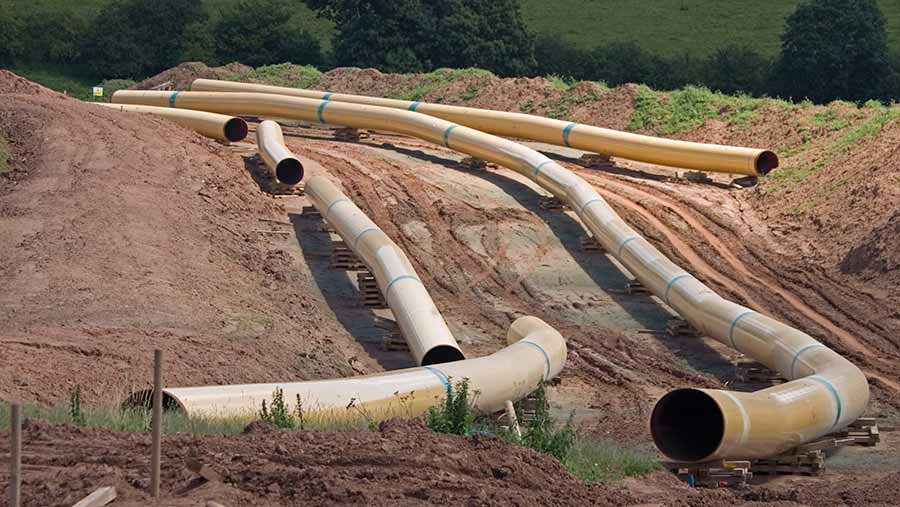How to restore your land after compulsory purchase works
 © Rex/Shutterstock
© Rex/Shutterstock The reinstatement of land after compulsory purchase works can be challenging and landowners have no particular legal right to physical reinstatement.
The over-arching principle of equivalence means that the acquiring authority should leave the affected landowner in, as near as possible, the same position after the works as he was in before.
But it can choose to do that by paying compensation instead of carrying out reinstatement work.
It is important that this issue is discussed at the very outset of the scheme so that any particular concerns can be discussed and a way forward agreed.
 Kate Allen
Kate AllenTechnical and policy adviser
Central Association of Agricultural Valuers
Your agent should keep notes of what is agreed at the outset for reference.
See also: Compulsory purchase of farmland: Claim what you are owed
Where it is agreed that reinstatement works will be done, the acquiring authority may choose to do them itself, or it may agree to pay the landowner to do the work.
On larger schemes it is likely that the acquirer would rather do the work itself using its own contractors, because this will have been priced as part of the cost of the scheme.
Where a landowner would rather carry out the work himself, he is likely to have to demonstrate that this would be a cheaper – or at least more cost-effective – option.
How will the acquirer approach reinstatement?
On larger schemes, the contractor doing the work should provide a method statement setting out how the works will be undertaken.
For water and sewerage schemes, there is a Code of Practice for Pipe-laying Works in Private Land which covers basic issues such as the need to separate topsoil from subsoil.
See also: Compulsory purchase – understanding who can enter your land
Ask for copies of the relevant documentation in advance.
Remember that the acquirer is not committed to carry out full reinstatement and can choose to pay compensation instead.
Issues to watch out for
- Land drains – where land is under-drained, the landowner should tell the acquirer this at the earliest stage in the process and provide a copy of any drainage plans. The landowner should ensure that he has the opportunity to inspect land drains before they are backfilled. If land drainage is a particular concern, the landowner should request that a specialist land drainage contractor is engaged to oversee the reinstatement works.
- Field boundaries – check the specification for replacement fencing, hedges etc.
- Storage of topsoil and subsoil – are they separated, properly stored and not allowed to get wet or compacted?
- Adverse weather conditions during the reinstatement work – as the scheme draws to a close, contractors may be impatient to finish the work and move on, but if weather conditions are unsuitable the work should be suspended.
- Keep an eye on the works – if you spot a potential problem raise it immediately, preferably via your agent, and take photographs if possible to provide evidence. For example, if you think that the subsoil reinstatement is unsatisfactory, this will be difficult to prove once the topsoil is put back.
- Raise concerns promptly – if the contractors have left the site it can prove difficult in practice to get them back to rectify problems.
How long does it take to reinstate land?
The timescale for reinstatement will depend on the nature of the works. For some small schemes the reinstatement may happen very quickly, but for larger schemes it may be many months or even years before land is reinstated.
Once the reinstatement works are complete, the full loss to the landowner may not be apparent for some time, as it can take years for land to recover.
The acquirer might offer a full and final settlement (taking account of estimated future crop losses) once the reinstatement works have been signed off.

Gas pipeline marker © Rex/Shutterstock
See also: Compulsory purchase – how to minimise impact on your farm
However if it is a complex situation, it might be better to reserve future crop losses and any land drainage defects from the claim, so that a further claim for these can be made in future if necessary; problems with drains in particular might not become evident for a number of years.
Your agent can advise on the best approach, but do remember that time limits mean that a claim must usually be made within six years.
Top tip: How to keep good records
It is essential that a comprehensive record of condition of the site is taken before the works start.
For example, if the main farm access track is in very good condition and it will be used by construction traffic during the works, a detailed record of condition of the track should be made and reinstatement to the same standard agreed before the works start.
On larger schemes the acquirer should record site conditions and give a copy to the landowner (you may have to ask for it), but where the landowner has particular concerns they may wish to take extra photographs or video too. Where possible these should be date-stamped to show when they were taken.
What happens if you are not happy?
If the reinstatement work is not satisfactory your agent should notify the acquirer and press for the problems to be rectified or compensation paid.
If the parties cannot agree then your agent can advise on how to take matters further.
That might mean making a formal complaint to the acquirer, seeking informal dispute resolution such as mediation, or ultimately taking a formal complaint to the Upper Tribunal – an expensive option and usually a last resort.
